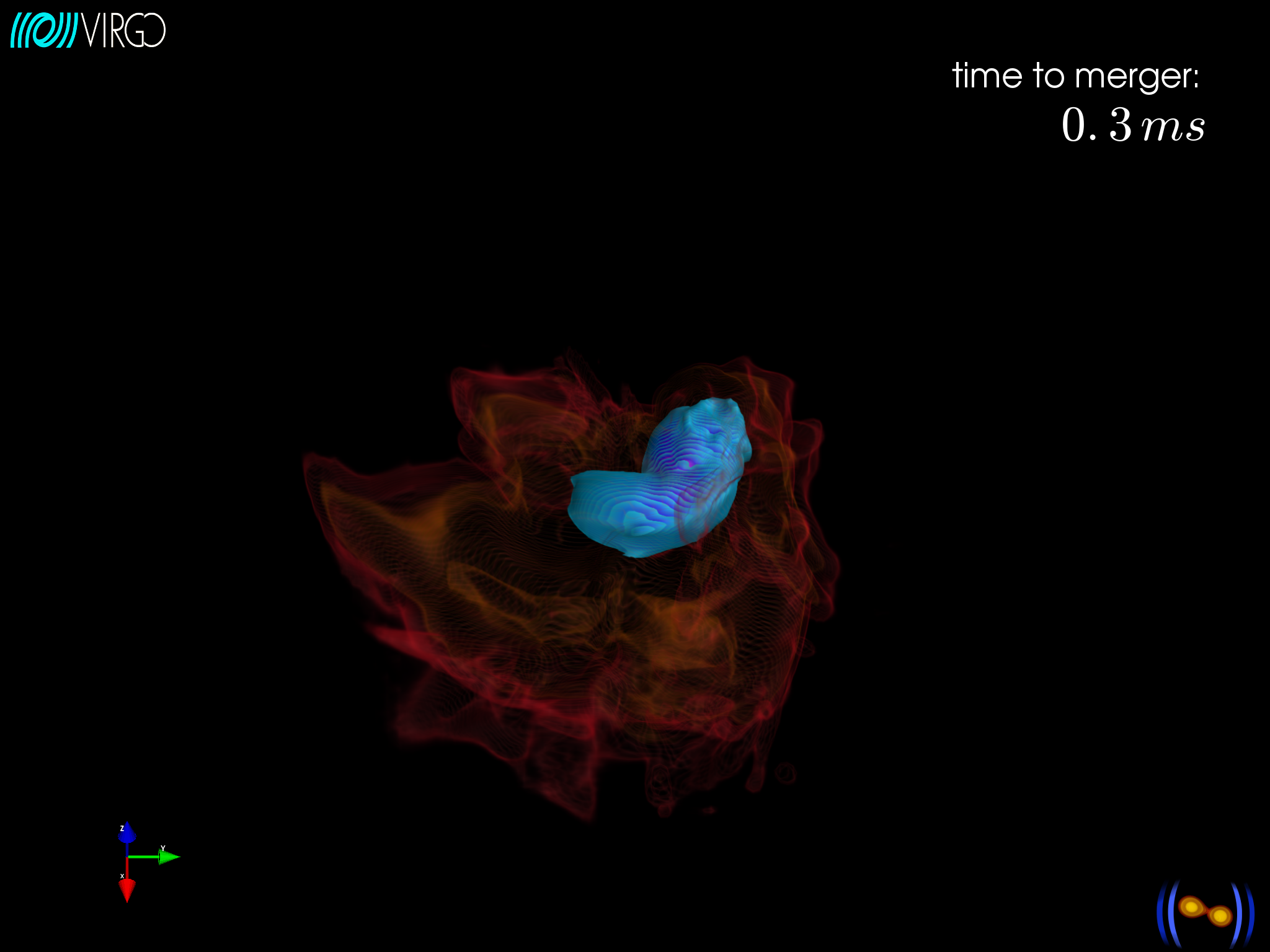GW190425
Image credit: CoRe / Jena FSU
.
The source of GW190425 is estimated to be at a distance of 500 million light years from the Earth. It is localized in the sky within an area about 300 times broader than was the case for the BNS observed by LIGO and Virgo in 2017, the famous GW170817, which gave birth to multi-messenger astrophysics. However, unlike GW170817, no counterpart (electromagnetic signals, neutrinos or charged particles) has been found to date.
There are a few explanations for the origin of GW190425. The most likely is the merger of a BNS system. Alternatively, it might have been produced by the merger of a system with a black hole (BH) as one or both components, even if light BHs in the mass-range consistent with GW190425 have not been observed. Yet, on the basis solely of GW data, these exotic scenarios cannot be ruled out. The estimated total mass of the compact binary is 3.4 times the mass of the Sun. Under the hypothesis that GW190425 originated from the merger of a BNS system, the latter would have been considerably different to all known BNS in our galaxy, the total mass range of which is between 2.5 and 2.9 times the mass of the Sun. This indicates that the NS system that originated GW190425 may have formed differently than known galactic BNSs.
“After the surprise of the initial results”, says Alessandro Nagar of the Istituto Nazionale di Fisica Nucleare (INFN) of Turin, Italy, “we have finally reached a reliable understanding of this event. Although predicted theoretically, heavy binary systems like those that might have originated GW190425 may be invisible through electromagnetic observations.”
“While we did not observe the object formed by the coalescence, our computer simulations based on general relativity predict that the probability that a BH is formed promptly after the merger is high, about 96%”, says Sebastiano Bernuzzi of the University of Jena, Germany.

